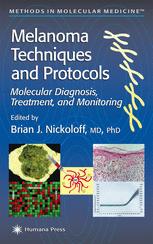

Most ebook files are in PDF format, so you can easily read them using various software such as Foxit Reader or directly on the Google Chrome browser.
Some ebook files are released by publishers in other formats such as .awz, .mobi, .epub, .fb2, etc. You may need to install specific software to read these formats on mobile/PC, such as Calibre.
Please read the tutorial at this link: https://ebookbell.com/faq
We offer FREE conversion to the popular formats you request; however, this may take some time. Therefore, right after payment, please email us, and we will try to provide the service as quickly as possible.
For some exceptional file formats or broken links (if any), please refrain from opening any disputes. Instead, email us first, and we will try to assist within a maximum of 6 hours.
EbookBell Team

5.0
38 reviewsWith the completion of the Human Genome Project, it is now possible to decipher the biochemical cascade of events that lead to melanoma, a virulent form of cancer that is currently at epidemic proportions worldwide. In Melanoma Techniques and Protocols: Molecular Diagnosis, Treatment, and Monitoring, a broadly diverse group of researchers and clinicians offer not only reviews of the most important recent advances in melanoma oncology, tumor immunology, and pathology, but also state-of-the-art molecular techniques for probing melanoma's basic biology. These readily reproducible methods can be used to develop diagnostic approaches, therapeutics, and status monitoring of patients suffering both early- and late-stage melanoma. With emphasis on the experimental details critical to success, each method is described in step-by-step fashion by hands-on masters, often those who have developed them in their own laboratories. Notes about potential pitfalls and troubleshooting tips on how to adapt procedures to new experimental systems are also provided.
Comprehensive and highly instructive, Melanoma Techniques and Protocols: Molecular Diagnosis, Treatment, and Monitoring offers clinicians and basic scientists concerned with malignant melanoma both rich new clinical perspectives and the wide ranging experimental protocols essential for achieving more rapid breakthroughs in this near-epidemic disease.